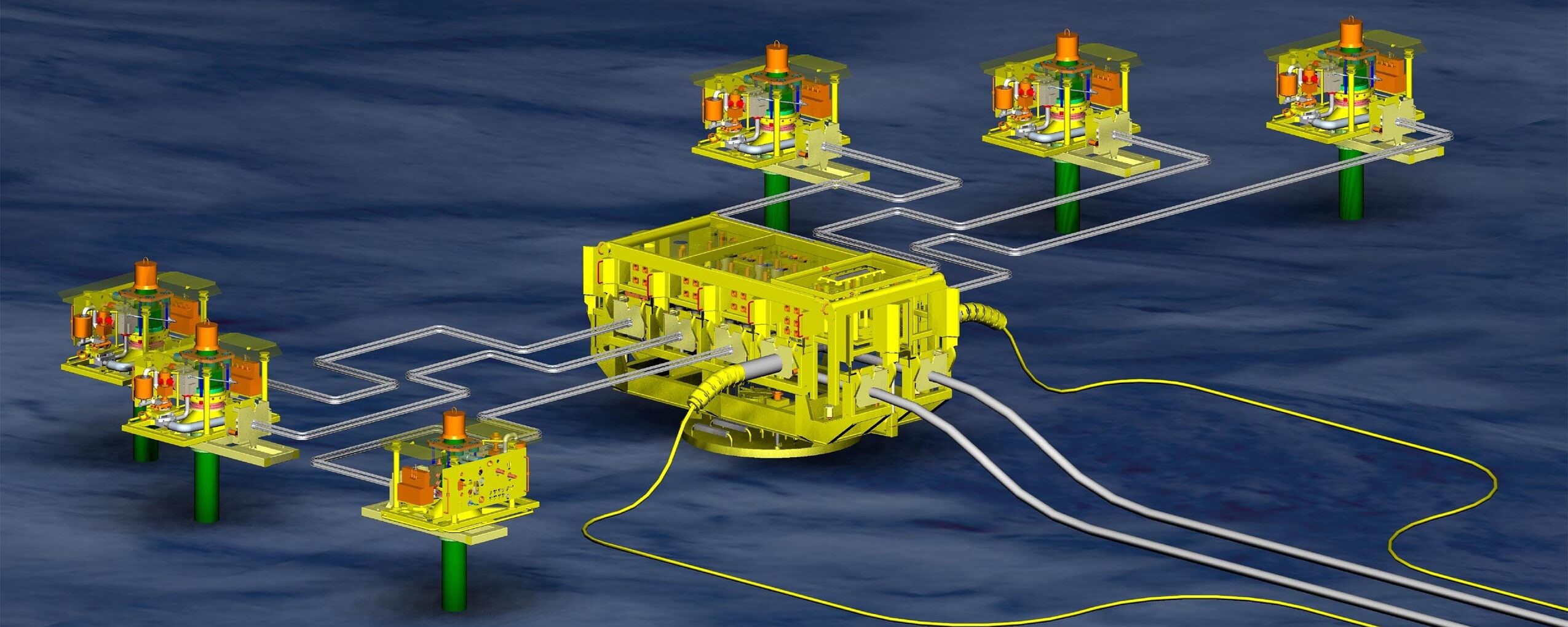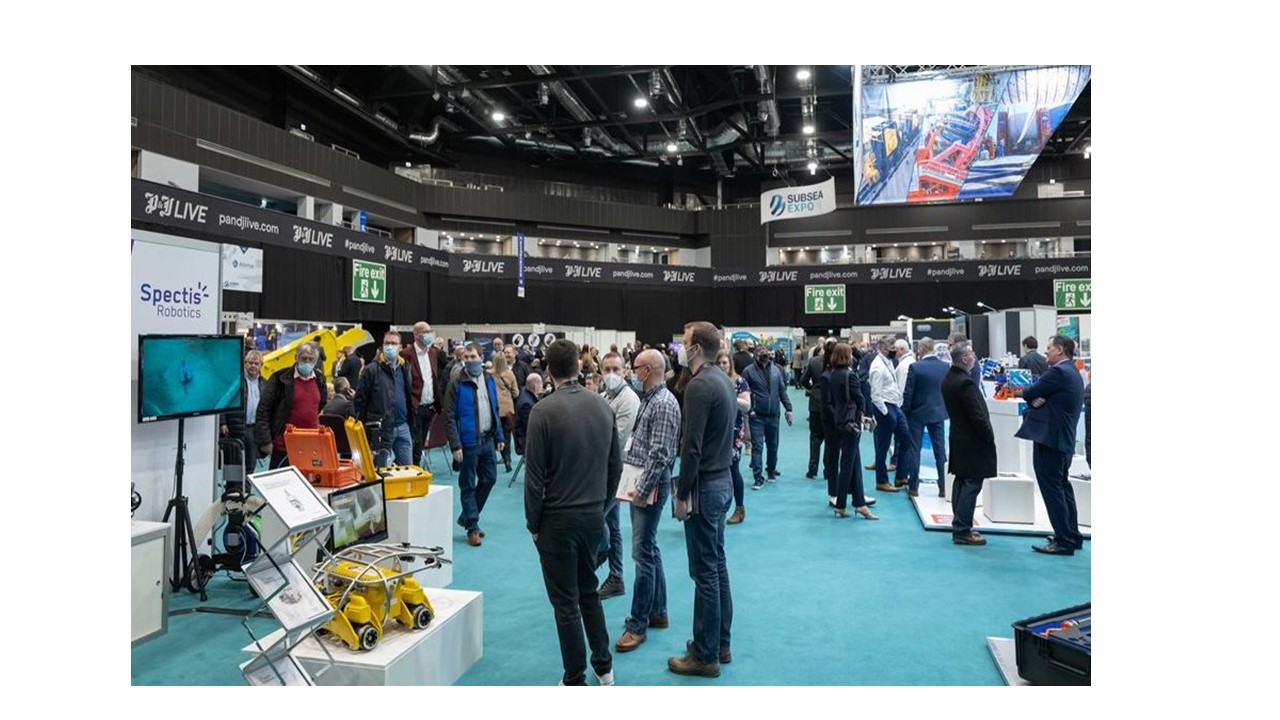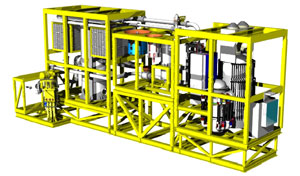[As a prologue, firstly I would like to say sorry for being so long between episodes. Been overwhelmed as most people have just trying to stay safe and well and have also had problems with my office glasses. Such a sign of age – what an admission! My regards go out to all out there looking for something to keep them sane. I hope this helps and I hope to keep to a tighter schedule with the next installment.
In researching these articles, I have taken great pleasure in reading back issues of Subsea Engineering News, especially the early years. There was so much happening that it must have been quite difficult at the time to keep tabs on all of the events. I have to take my hat off to myself (!), but then again it was very exciting and noteworthy.
Two historical points: In late 1985, Texaco was hailing its success with the Highlander subsea system (see Subsea II) and took a few well aimed pot shots at Shell, notably for taking so long with the UMC from conception to production. Brian Walter, who was project manager – according to one person who was there, he might have been project director, but Texaco didn’t want to pay the price for him having that title – pointed out at an event in London that Highlander was three years in gestation including 16 months on engineering and three on testing, compared with seven years, two years and 15 months on the UMC.
Of course, no one ever said that the UMC was perfect. I found another reference from early 1985 in which the esteemed Bil Loth told a conference the development could have been done much cheaper by making it ‘site specific’, eg having well slots capable of taking either an on-template or satellite well, but not both and providing the through-flowline testing (tfl) capability only for production wells, not for injectors.
Another footnote on the subsea world as I looked back is how many times Vetco was sold over the years. From its origins as the Ventura Tool Company, it was subsequently owned by Combustion Engineering where it was merged with Gray Valve; Hughes Tool; Bain; ABB; a private equity group led by Candover and 3i; and GE before being combined with Baker Hughes into BHGE and spun off. This does not include numerous deals that did not happen – several to Japanese companies and even with FMC – nor the current rumour of a takeover/acquisition by Halliburton.}
**************************************************************************************************
The mid-1980’s was a time of both excitement and uncertainty in the oil business. There were various new technologies emerging on the scene which indicated how the business might expand in the future. Likewise, though, there was continuing uncertainty about both project economics – ie what really was the best way to develop small fields? – and the price of crude oil.
Over in Norway, where things have always been done differently, Norsk Hydro was about to launch into the development of the very large Oseberg field, but there remained considerable reservoir uncertainties. The answer was a long-term (17-month) production test, something that hardly, if ever, had been done before. This plan threw up an obvious question: how to conduct such a test and the answer was a purpose-built production/test ship (pts), a totally new concept. At a time when the Japanese were the pre-eminent shipbuilders – later to be superseded first by the South Koreans and then the Chinese – Nippon Kokan KK had already made some penetration into the offshore market by building jackets for American projects, but it then picked up the $70mn contract to build a pts, to be named Petrojarl 1, which would be operated by Golar Nor Offshore, but owned by a consortium of Norwegian companies.
The vessel, designed for harsh North Sea conditions, had storage for 160,000bbls of processed crude or roughly a week’s production based on the initial 20,000b/d process plant. It was described at the time as ‘an extremely sophisticated ship’ with its own built-in workover system. As for the production hardware, the pts was to be equipped to produce from a single Hughes Offshore F6MN stainless steel diverless split subsea xmas tree (there was a backup as well) with a universal connection system which would allow it to interface with any wellhead. There was a 235m rigid riser, but the whole system was qualified for up to 650m. Some of the features, including the re-entry funnel, were first refined for the tree designed for Chevron’s deepwater Montanazo field, offshore Spain, which was never deployed there, but that is another story.
This specialised unit was really an fpso – floating production storage and offloading unit – by any other name. This production facility concept itself had not been used more than a handful of times before the mid-1980’s. Shell put the first converted tanker on the Castellon field, offshore Spain, in 1977, but the main user was the early incarnation of Bluewater which had a series of aged tankers deployed in the Far East and the Mediterranean, all named ‘blue water’ in the local language, eg Acqua Blu, Ayer Biru and Lan Shui. When the company was acquired by Hugo Heerema, a member of the Dutch family with a distinguished offshore pedigree, in 1993, it began to grow its offshore fleet with even more ‘blue waters’ – Uisge Gorm, Glas Dowr, Bleo Holm, Haewene Brim and Aoka Mizu.
No one, not even Golar Nor Offshore and later Teekay Offshore, could have foreseen the long operational life of Petrojarl 1 – there were more Petrojarl-monikered fpso’s (Foinaven and Varg) but none with numbers. It worked on 10 different North Sea fields, both Norwegian and UK, in a variety of modes – sometimes as an early production unit, sometimes for full field production and even once as an interim offloading unit. After its last North Sea deployment on the Glitne field for Statoil, it was sent off for a major ($175mn) upgrade before going to Brazil to work for QGEP on the Atlanta field. Having already had an operational life of just short of 35 years, the upgrade is meant to extend that by another 15 years.
At around the same time that the idea of the pts was being bandied about the North Sea, BP had a plan of its own to deal with the issue of marginal field economics. It wanted a production unit that could be flexible enough to ‘buzz’ around the sector, alight on a field, drain it – like a bee taking nectar from a flower – and move on elsewhere. Such was born BP’s single well oil production systems, or SWOPS, concept, which eventually resulted in the construction of the offshore production vessel (OPV) Seillean which means honey bee in Gaelic. At least someone in BP had a sense of humour back then.
The unit – quite a bit larger (250m by 37m) than Petrojarl 1 (215m by 32) – was based around an idea that was flawed from the outset. BP thought it would be a great idea for this unit to produce until its storage tanks were nearly full and then it would sail to shore and offload. Somehow it did not see at the beginning that halting production and pulling the vessel off a well for a sailaway to shore was not a great idea. It was reported in SEN in May 1990, just a fortnight after the unit began operations on the Cyrus field from two wells, that it took 24 hours to pull the rigid production riser onto the OPV (just 12 to re-install it) with a six day round-trip journey to Rotterdam to offload its cargo and return to site.
While this is how Seillean operated – production was up to 25,000b/d with storage of 310,000bbls – BP’s original plan to have a fleet of SWOPS vessels did not survive even until the first began to work. Firstly it was decided that vessel operations would be more suitable for a flexible riser and then there was a quick shift to what would be seen now as conventional fpso operations – dubbed DPT for dynamically positioned tanker – using offloading tankers. That was the original plan for the Machar field, but like so many concepts back in the 80’s, it did not survive close scrutiny and was canned for a more conventional multi-platform concept with subsea. BP did not get its first proper fpso until Foinaven came onstream in the 1990’s.
The OPV did eventually get an offshore hose reel for offloading operations, but not until 1998 when the unit had already been sold (it went in 1993 to drilling contractor Reading & Bates).
While the OPV itself was novel, there were more technology innovations to this project than simply the vessel. At around this time, BP was promoting its universal wellhead concept. Designed by Hans Hopper, it was meant to eliminate the wasteful abandonment of exploration wells by deploying a convertible wellhead that could be used later for production. BP had installed such wellheads for exploration before, but it was at Cyrus that one was first converted to production on a well that might well have been the first horizontal well drilled from a semi.
There was also a new high specific gravity water/glycol controls fluid from Isaac Bentley which was designed for multiple exposures to seawater; flex-joints, more commonly associated with tension leg platforms, from Murdock Engineering that were incorporated into the design of the production riser; and a heave compensation system for the cursor-based rov deployment system in the moonpool, amongst other new equipment.
The subsea xmas trees came from Cameron Iron Works, as it was known at the time. Cameron also worked closely with SubSea Offshore, another name that has disappeared from the industry, on the rov-operated tooling packages used for intervention with a Scorpio rov.
These two units may have been at the forefront of the fpso era, but there was never another vessel built with the intention to do what these two did. There was to be a Petrojarl II that was to be deployed for early production on the Heidrun field in the Norwegian sector, but that never happened and the hull, a Tentech 850 design, eventually became Kerr McGee’s Gryphon field fpso, but again another story.




